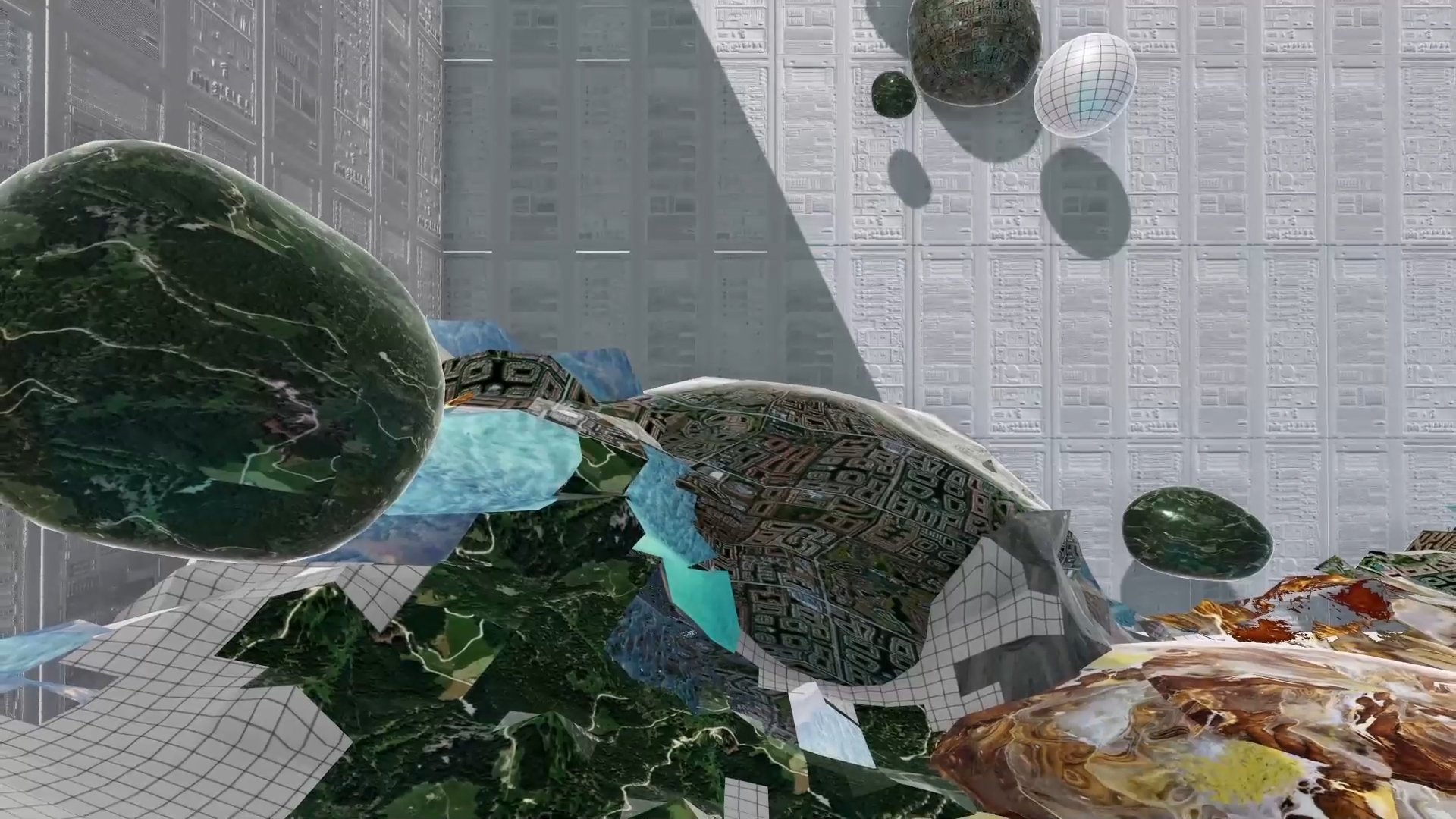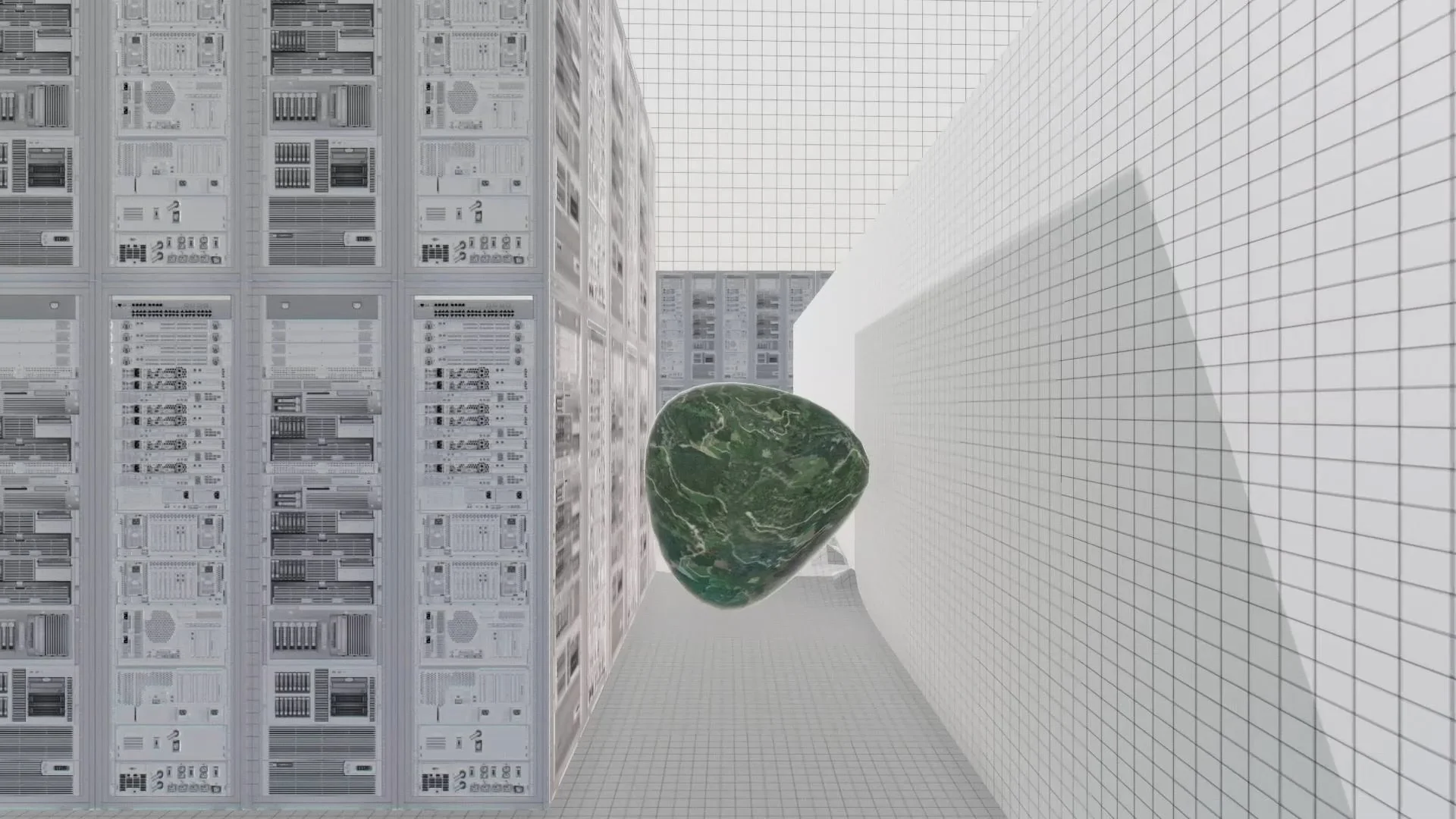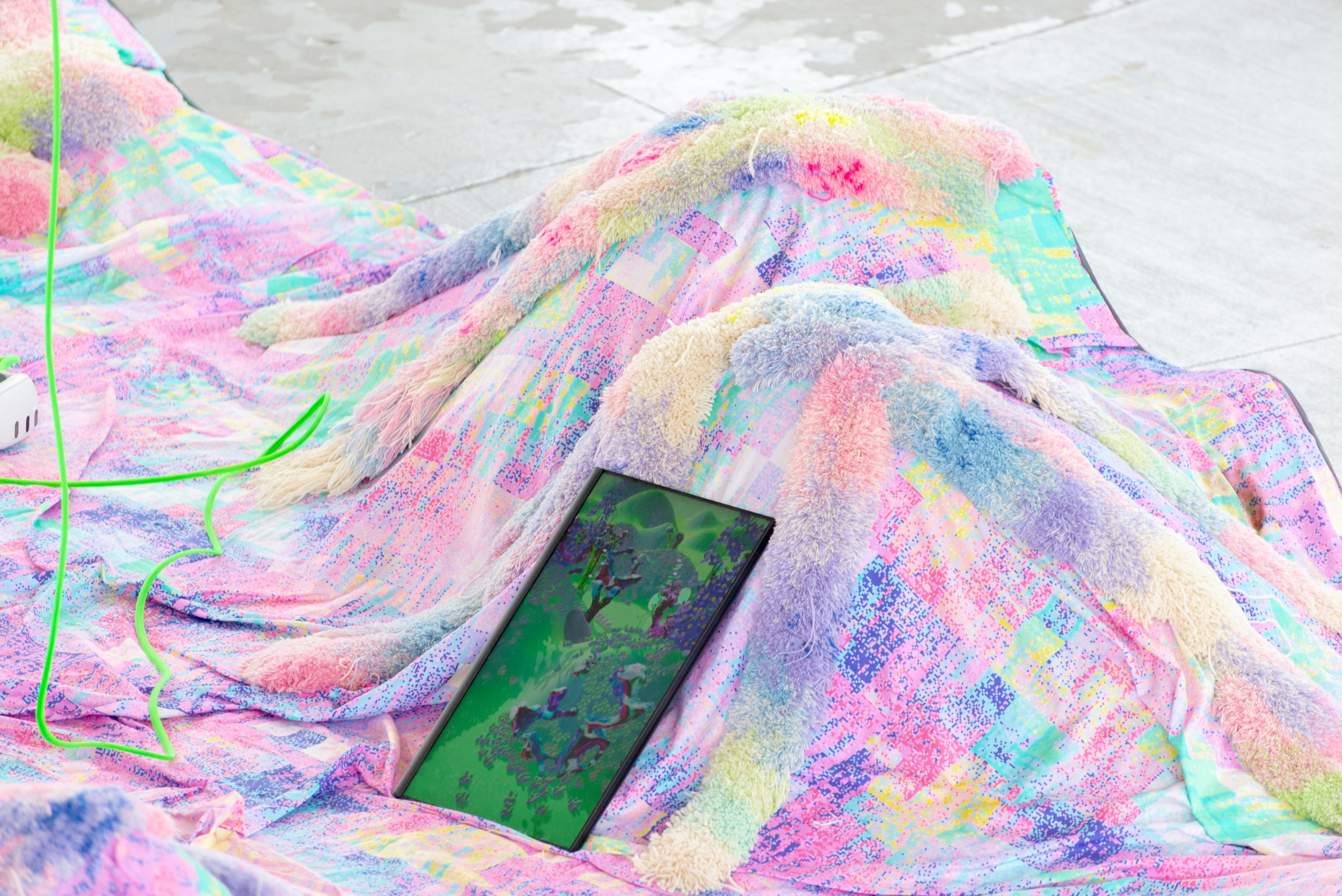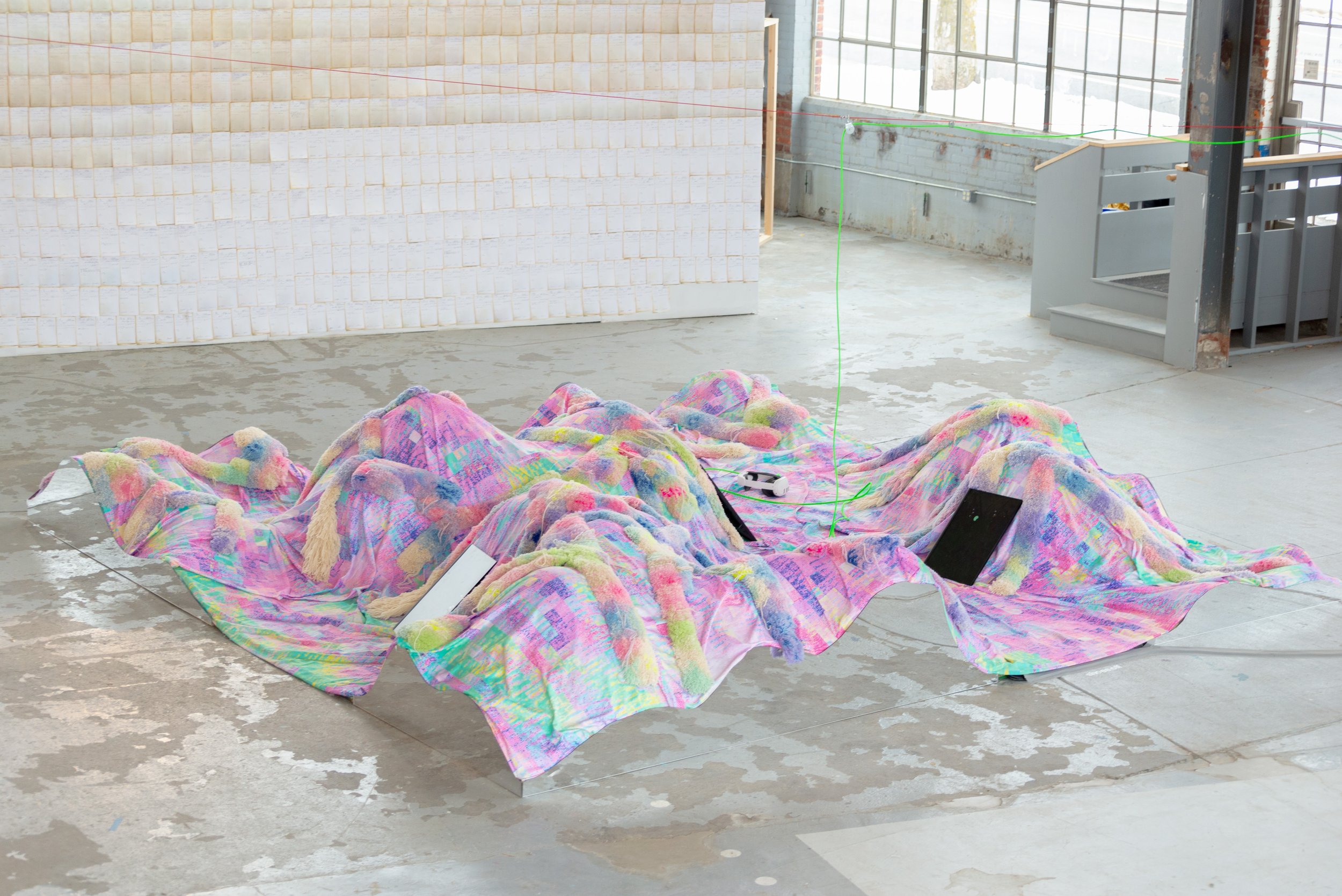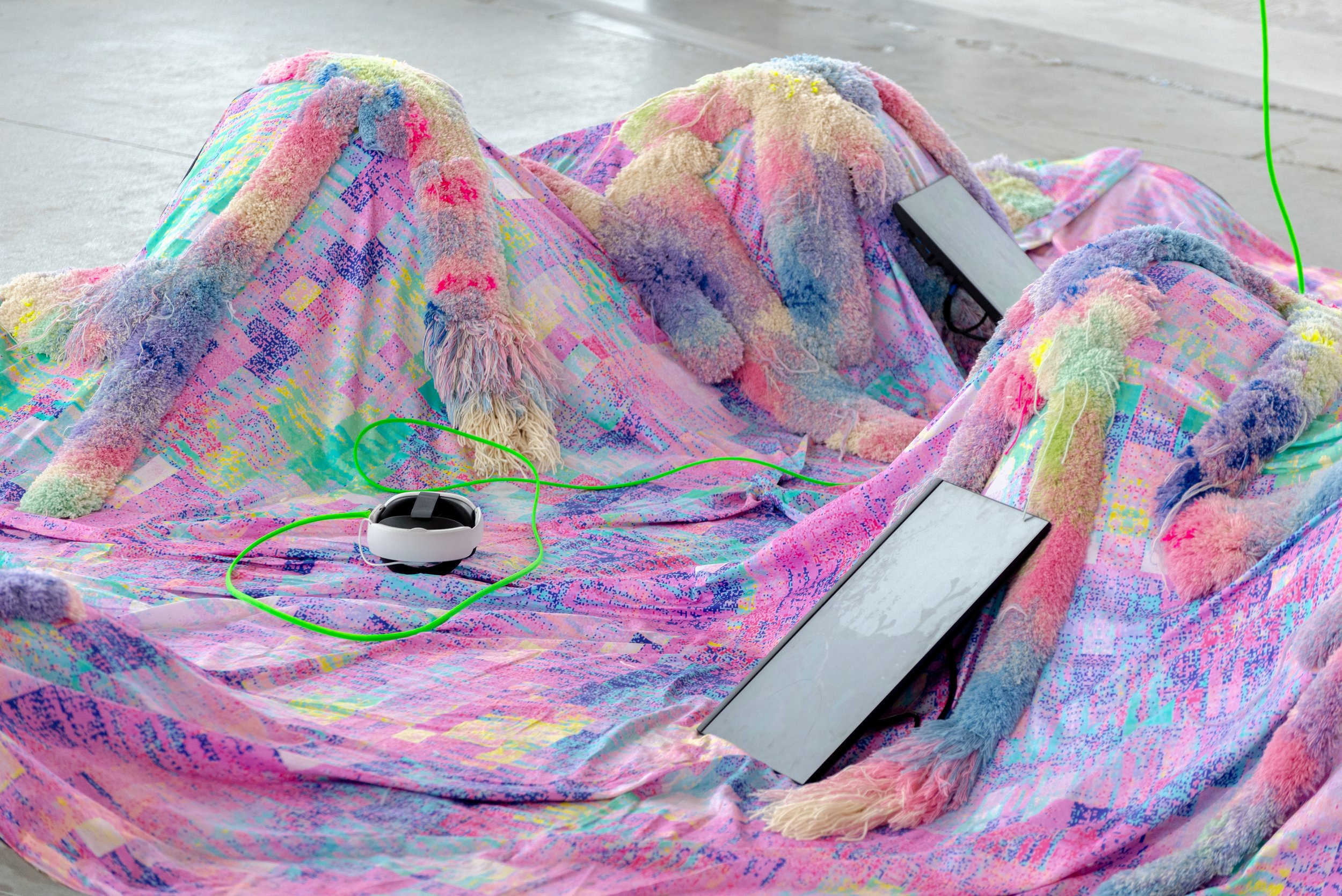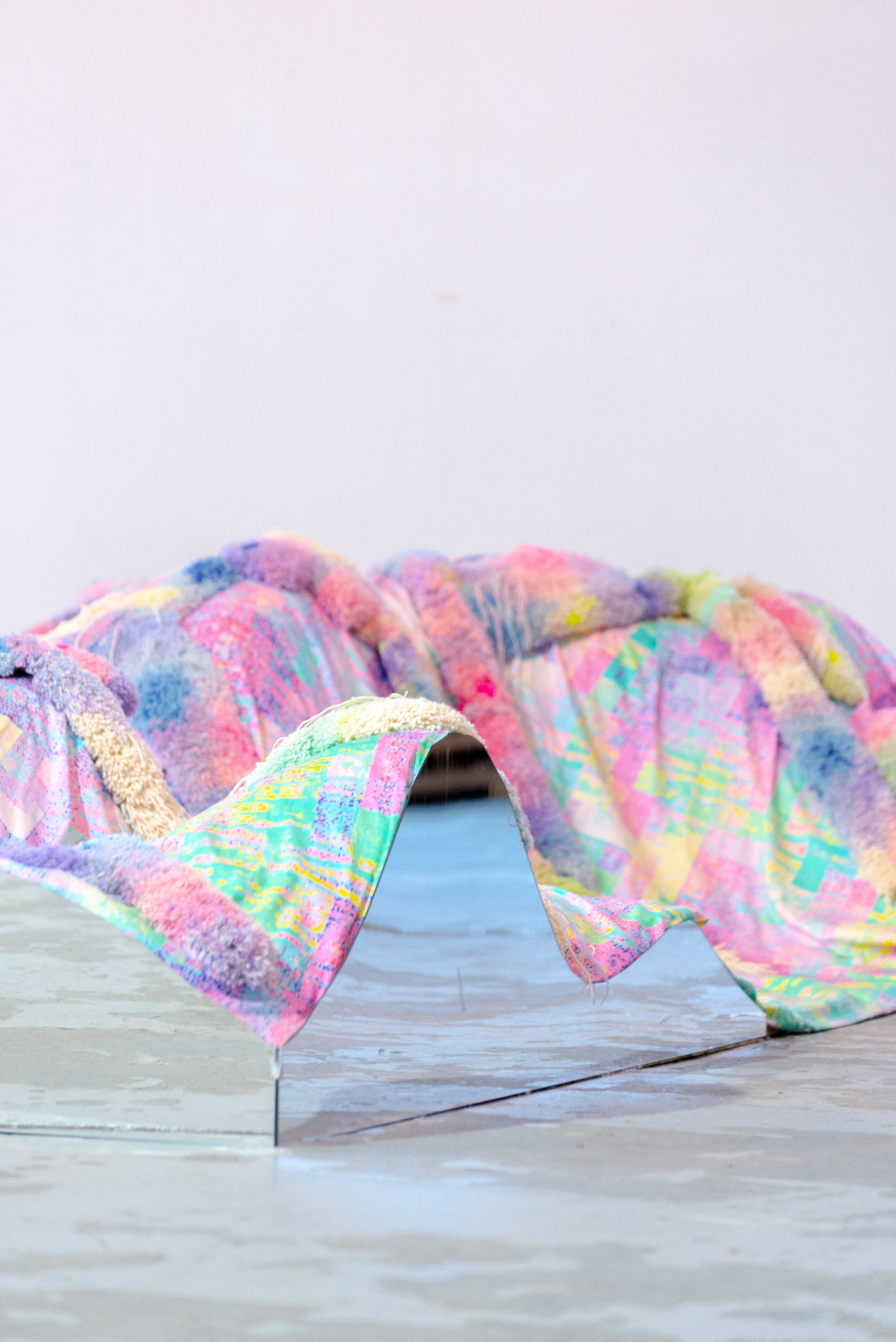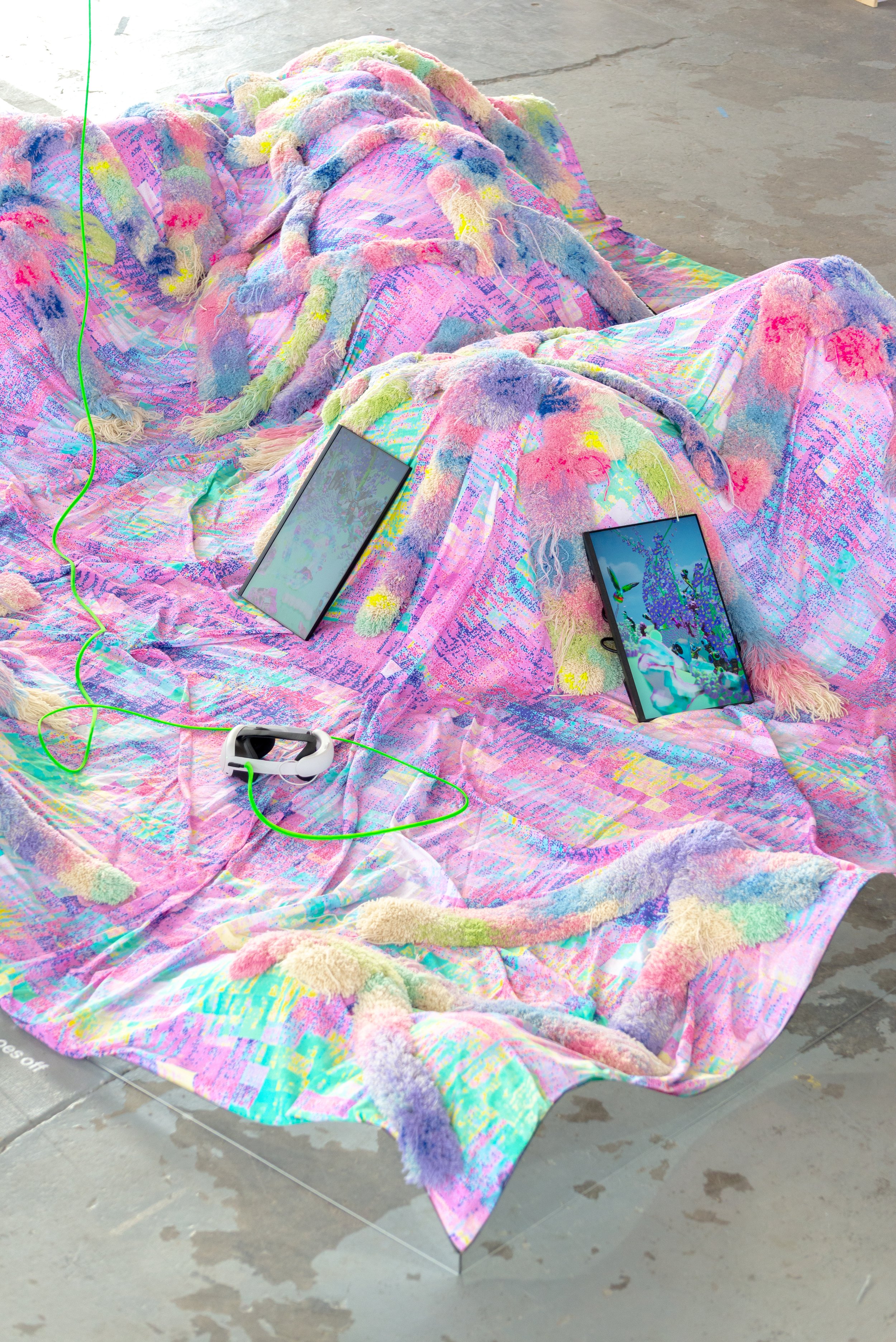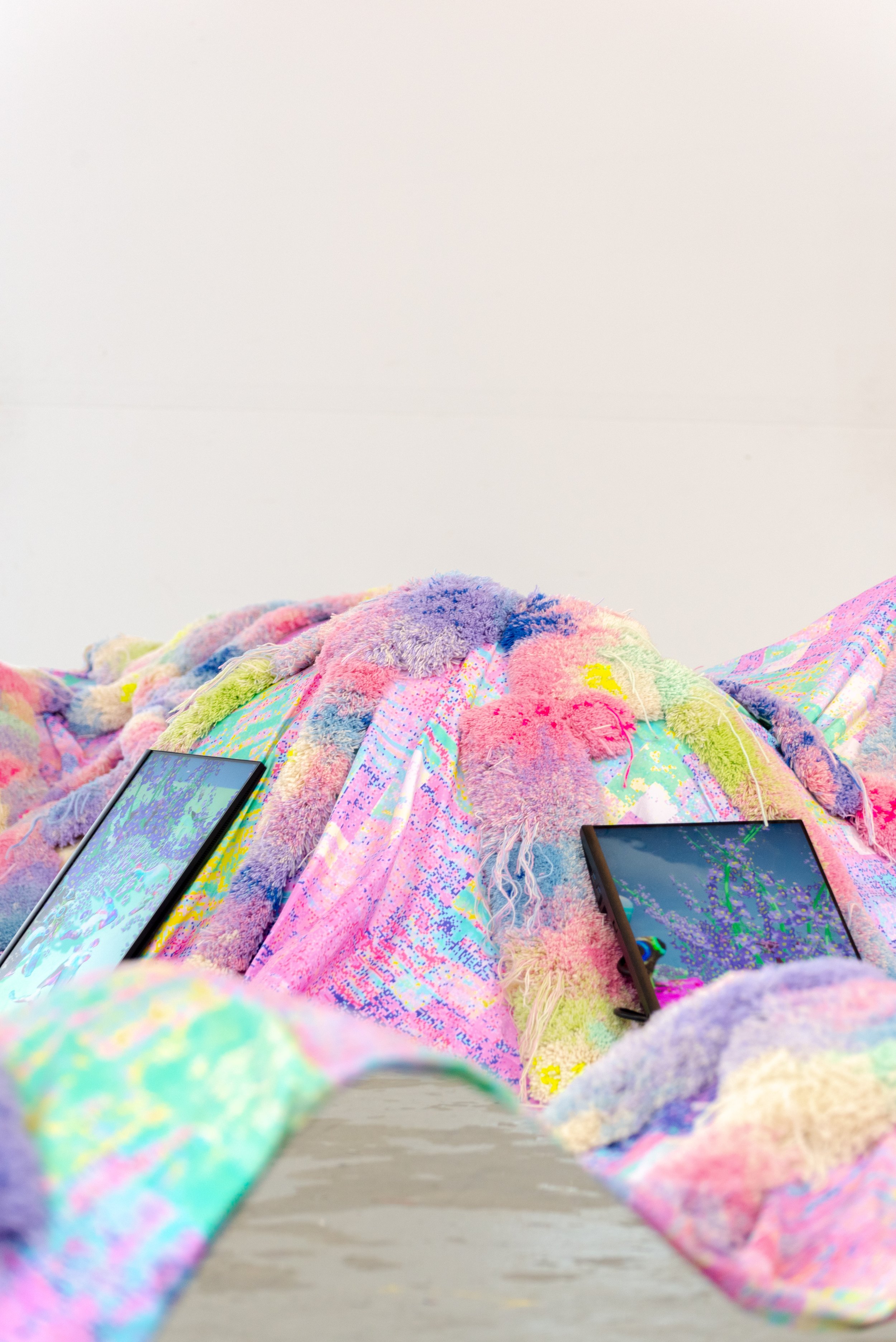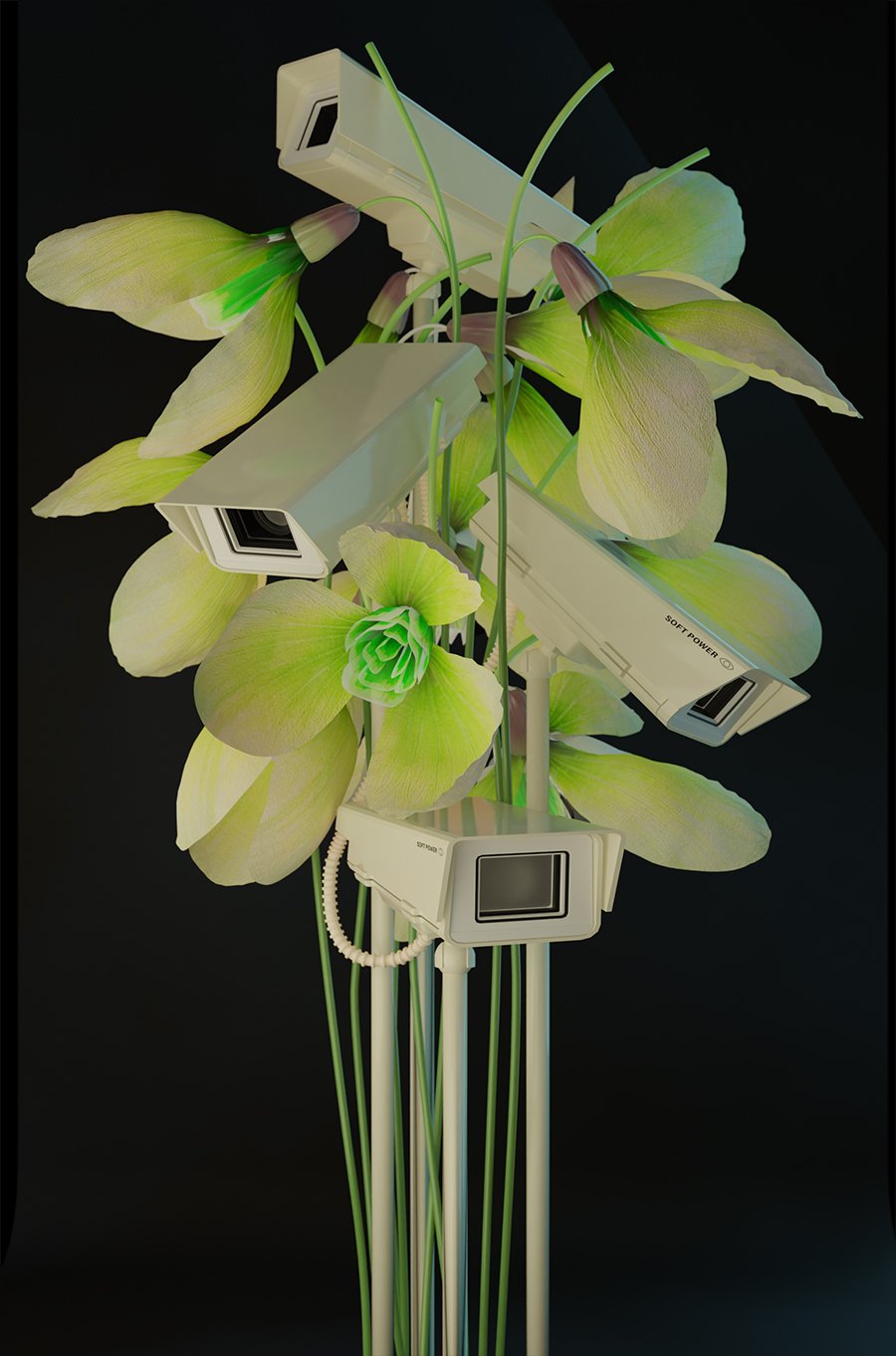Artist Interview: Alina Nazmeeva
Alina Nazmeeva is a Detroit-based artist and an educator at University of Michigan’s Taubman College of Architecture and Urban Planning. She creates simulations and worlds that analyze the interactions of physical and digital spaces and objects, and their cultural, economic and political consequences.
Using XR, gaming engines, CGI software, machinima, and physical installations, her creative and research practice examines the relationship between virtual and concrete, cities and video games, life and animation, organic and engineered.
We asked Alina about her art, creative process, and inspirations.
Multimedia work by Alina Nazmeeva: bug in my software
Can you tell us about your background as a digital artist? How did you get started in this field?
As long as I remember, I always wanted to be a visual artist, telling stories and creating worlds using visual media. Persuaded by my parents to go to architecture school, I developed a strong passion for spatial practices, architecture and urbanism. Architects and urban designers are great generalists that typically address many questions in their design at once, and think in 4 or more dimensions: synthesizing spatial, environmental, economic, social, political, aesthetical and anachronistic, futuristic concerns. Architectural education was great for me as it challenged and keeps challenging me to think with multifaceted perspectives.
XR Art by Alina Nazmeeva: Virtual Social Protocols of Space-craft and Self-Craft
Another important aspect of the profession and the discipline is that it always starts with the images and simulations, and today these are predominantly digital. So my exposure to some of the questions concerning digital technology, media and art was initiated within the context of architecture: with CAD, structural simulation and rendering software used as tools to articulate architectural ideas.
Further, as a fellow at Strelka institute and a student at MIT’s school of Architecture and Planning, I met some amazing people who pushed me to think deeper in the roles of technology, and more specifically digital technology and tech industry and their broad ramifications. I became obsessed and still am with digital media, video games, virtual worlds… My graduate thesis was analyzing the processes of construction of self and space in virtual worlds, the contexts and the implications of these constructs.
AI Art by Alina Nazmeeva: Liquidity
What inspires your art? Are there any particular themes or subjects that you enjoy exploring through your artwork?
I enjoy complex, contradictory subjects. For instance, virtual worlds and their cultural, social, economic status…on the one hand, the video game industry is a massive global network of corporations, and the game production, consumption and circulation manifest the tension between market and cultural values, among others.
Multimedia work by Alina Nazmeeva: bug in my software
On the other hand video games and virtual worlds are the lived spaces in which social, aesthetic and political reality and experience are constructed. The so-called metaverse-yet-to-come—and here I do not mean only Meta’s proprietary metaverse—but rather all kinds of spatial and social computing systems and digital spaces encompassing from MUDs (multi-user dungeons) to some ideas of future of XR—seems to be a neoliberal hellscape.
However, it also holds a liberatory and emancipatory potential. Legacy Russel in Glitch Feminism is speaking about this potential of the internet, virtual worlds, as spaces that are not as calcified yet as the physical reality and its systems of oppression and discrimination. It follows not-exactly-the-same rules, and I am intrigued to analyze the inconsistencies, oscillations and murmurs between AFK and IRL.
“Not to say that virtual worlds are unproblematic, but it is in this contradictory reality, and in this love-hate relationship with the digital spaces and virtual worlds and the tools used to make them, I find the productive tension that keeps me stimulated.”
3D Game by Alina Nazmeeva: datascapes
“If I may theorize on the creative process, there is a kind of gradient between a rational, conceptual, research-based method and a visceral, intuitive, emotional one. I find it important for them both to percolate and be present in different ways in the work.”
Though working with generative AI definitely muddles this distinction, as it adds an input that is outside of my decision-making process as an artist. At risk of simplification, the process of working with various AI models, emotionally and experientially, for me feels similar to collaboration and it does include quite a bit of negotiation, necessary compromise, and unexpected aesthetical outputs.
3D Game by Alina Nazmeeva: datascapes
While I understand that AI’s intelligence part is not an intelligence, but something similar to what Kazys Varnelis calls a “desiring machine” - a machine that is trained to produce what a user/AI artist wants (allegedly), desiring to fulfill our desires. In that sense AI is close to a tool, but aren’t tools intelligent? Again, simple thought, but tools, materials and technologies influence quite directly what and how we do what we do. Wool yarn has different qualities than acrylic, crochet hook from latch hook, acrylic paint from oil, ink from graphite, Unreal from Unity and so on. Tools guide the artists as much as artists guide tools. In a way, working with tools is a collaborative process. Going further into the rabbit hole, where do I begin and my tools end? Language is a technology, too. Thought is a tool too. When different positions in the system - user, tool, collaborator, and other - switch and flip?
In my most recent work, bug in my software, I experimented with this “venn diagram” between the agencies of tools, materials, artificial and human intelligence over the pairing textile work with the creation of an AI-agent driven speculative ecosystem.
“The protagonist of this work is a silkmoth - simultaneously organic,yet highly engineered and mechanized for silk production creature. Silkmoth here is a proxy and an avatar to examine the relationship between gender, labor, human and non-human intelligence. ”
Following the process of artificial selection in the development of domesticated silkmoth, I experimented with a bit convoluted way to generate the simulation, using different AI models, from LLMs and word embeddings to text-to-image, text-to-3d, and image-to-3d models. It started with the keywords that I selected to describe my intention towards the work, and further transformed and adjusted these keywords into phrases, prompts, “prophecies” that I further used to generate the world of bug in my software.
The physical installation employs the silkmoth's DNA sequence, transformed into a visual pattern that is both a blueprint and a historical document. This document is expanded into an architectural scale landscape intended to be occupied, inhabited, and lounged on. bug in my software considers the notion of bug - understood as a glitch or malfunction in a system (in particular, computational, engineered systems), and on bugs in literal sense - insects, moths, critters populating ecological and human-made systems. bug in my software draws a line from engineered lifecycle and DNA of silkmoth to the womxn-dominated textile labor and gendered biases embedded in AI development.
Multimedia work by Alina Nazmeeva: bug in my software
Can you tell us about an upcoming project? What makes it special to you?
I am currently working as a part of a fantastic collaborative project titled XR/XF: Extended Realities, Extended Feminisms. In collaboration with media artist Yvette Granata, my friend and colleague at the University of Michigan, we are curating a pop-up exhibition and a series of events on UMich campus and downtown Ann Arbor.
XR Art by Alina Nazmeeva: Virtual Social Protocols of Space-craft and Self-Craft
Within XR/XF Yvette and I are also producing new collaborative work pre-game. pre-game is an immersive installation that pairs physical furniture, found objects and an XR essay. Simulating and subverting the experience of tailgate and football game, pre-game probes the connection between life and animation, physical and digital bodies, physical motion and its digital capture through a cyberfeminist lens. Set against the backdrop of Ann Arbor and the University of Michigan, a hotbed of football fandom and culture, pre-game uses football and tailgating culture as an entry point to discuss the notions of embodiment, gender, and “masses”.
Here we consider digital bodies as multiple data sets joined together. They are a composite of skins, faces, skeletons, rigs, motions, emotions, physics simulations. Every body is a composite body that is assembled, modified and molded via pharmaceuticals, social media, exercise, idleness, and other kinds of manipulations. Bodies, both physical and digital, are sampled, fragmented, cut, their properties and attributes taken, copied, pasted, applied to others. Pre-game will reflect on these concepts of digital embodiment and its construction and examines how it can both perpetuate and challenge gender norms and power structures.
3D Art by Alina Nazmeeva: Digital Vanitas
“Another exciting project I work on at the moment is a furniture line that combines what I call “dysfunctional art” objects including chairs, coffee and side tables.”
The impossible goal of this project was to bring an ideal digital object into the physical reality., my collaborator on this project and partner John Wagner and I are using stainless steel to create amorphous, blobby, “molten” objects that operate within interior spaces.
What else fills your time when you’re not creating art?
Currently I am teaching at the School of Architecture in the University of Michigan. This semester I am teaching a graduate Thesis studio titled In Other Worlds, in which students are invited to prototype worlds and speculative scenarios on the topic of their choosing. The two central notions of the studio are cosmologies and cosmotechnics. Inspired by the concept of “pluriverse” coined by the design theorist Arturo Escobar, our studio is set with the understanding that the world consists of multiple worlds, irreducible to a single dominant one. Term cosmotechnics, popularized by philosopher Yuk Hui, is helpful here to emphasize the role of technologies in the process of worlds-making, and the plurality of technologies.
“It emphasizes that technology is not universal or homogeneous but instead diverse and plural, entangled and situated in their specific cultural and cosmological understandings of the world.”
Each culture's technological practices manifest their cosmological understandings. This is important in the context of general technological homogenization and the ideas of “technological progress” as “one-fits-all'. Framed with the context of pluriverse and cosmotechnics, we speak about design, worldbuilding, spatial storytelling, argument and narrative, and prototype immersive worlds and stories. I am truly very thrilled to work with brilliant students, and every day is a joy to speak about their work.
3D Art by Alina Nazmeeva: Digital Vanitas
How do you see extended reality arts evolve in the future?
There are two different questions: how I would like it to develop and if I can anticipate XR arts development in the future. Following cosmotechnics, I think ideas of plural AI and plural XR is something is very intriguing to me. Following the concept of cosmotecnics, I am excited and hopeful to see more plural and situated platforms, works of extended reality and technologies that can enable them.
Harassment and violence percolate to virtual worlds, no matter how cartoony or cutesy or abstract they are. One of the early cases of sexual harassment in cyberspace was documented in a text-based MUD (multi-user dungeon) in the late 1990s by Julian Dibbell. So it is not just about aesthetics. Fast forwarding in the 2020s, following several sexual harassment and violence cases in Meta’s horizon worlds, only technological bandaids were suggested to address these – personal safety bubbles, bans etc. I am definitely not an expert in ethics and XR, yet I would imagine that virtual worlds centered around community stewardship might provide alternative, ethics centered approaches to virtual social spaces.
Following the questions Yvette and I posed in Pre-Game, the components that construct aesthetics and environment of virtual worlds, video games, and extended reality arts co-construct the general cultural/social reality. 3d-models, animations, interactive capabilities have embedded ideas, biases, worldview and situations of their creators, as well as the interpretations and readings by the audiences/viewers with their own positions and situations. So the more different stories from a range of people who can tell their stories the better. XR and tools used to work with it are fairly accessible - and enable more and more artists to reduce the costs of producing complex work. With the expanding accessibility, it is incredible to realize that it would not be possible even 10-15 years ago.
3D Game by Alina Nazmeeva: datascapes






